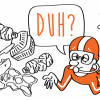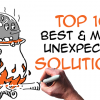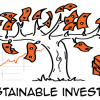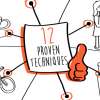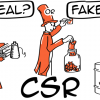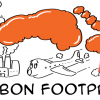Transcript
Natural capitalism: what nature provides for your business should be on your balance sheet
Natural Capitalism is a way of doing business that recognizes the value of natural and human resources and life-supporting ecological services. Here’s a story to illustrate.
In the 1950’s in the Atlantic northwest, equipment and technology made it possible to fish cod faster than the fish stocks could replenish. The cod was treated like an infinite resource; no financial value was assigned to cod in the balance sheets, but income from selling the fish was. Using financial language, essentially we liquidated our capital of cod and called it income. In 40 short years, the northern cod biomass fell to 1% and in 1992, the Canadian government declared a moratorium, ending the region’s 500-year run with the Northern Cod.
As discussed in our triple bottom line video, the economy is part of society, which is part of the environment. This means all economic and social progress ultimately depends on the environment, the largest circle. That’s natural capital: the ecosystem services and natural resources that we need to survive and thrive. The middle circle represents society, or the human capital. Our economy is the smallest circle because it is governed by the rules, regulations and structures of the other two circles. The economy depends on human capital and natural capital to thrive. In the collapse of the Northern Atlantic cod fishery, the environment circle of cod was destroyed when the fish were gone. Then the social circle of fishing communities on the eastern coast of Canada was badly damaged when people were out of work, and with it the economic viability of the cod fisheries.
What would a natural capitalism approach to this issue have looked like? Well, it would have meant:
- Feeding people and increasing material welfare by providing fish without impacting our resources and ecological systems;
- Imitating nature (also known as biomimicry) in the fishing processes and products: managing cod as a living resource and making sure it is not removed from the ocean faster than it naturally replenishes;
- And focusing on the service being provided (feeding people) and not only the product that provides it (the cod). This would have helped to create sustainable business models that feed people and support fishing communities while culling fewer fish. In other industries, focusing on the service rather than the product is called “dematerialization” and this will be the subject of another video.
Here is an another example about an every day product that we can all relate to. Say you are a clothing company making and selling jeans. What would accounting for natural capital look like? The value of cotton for fabric of course, but also the plants used to make the dye that gives the jeans their colour; copper and steel for rivets and zippers; plastic and leather for labels; and even the raw material for the machinery needed for dyeing, spinning, weaving, etc.. It would also include the value of the human capital wherever the jeans are made. All of this would be added to the production costs and compared with the income generated by selling the clothes.
In a nutshell, natural capitalism means taking good care of the goose that lays the golden egg: what nature provides for your business should be on your balance sheet.
Businesses all over the world are innovating and gaining competitive advantage from applying the natural capital business model. I’ll share some stories about some of these companies in future videos. I’ll also be sharing videos on circular economy, biomimicry and the associated business opportunities, so stay tuned!
If you enjoyed this video, please subscribe. Our free sustainability videos are financed with an honour system. If you think, like us, that it is important work, you can contribute the amount of your choice by clicking on the orange button. Thank you to our patrons and thank you for watching!


